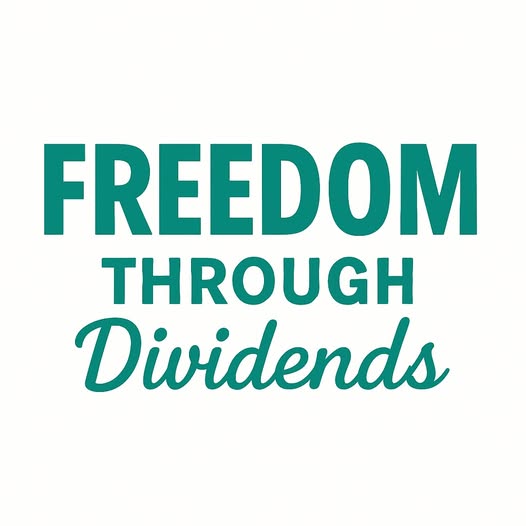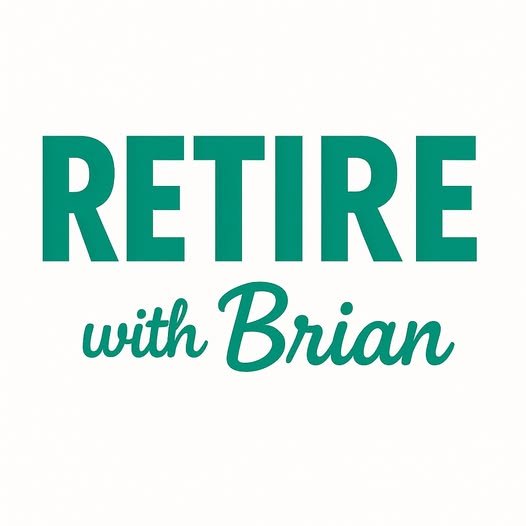Are you searching for a steady stream of income to add to your financial portfolio? The market is always changing, and investors are looking for stable and reliable ways to earn returns.
Dividend ETF investing is becoming a favorite way to earn passive income. By putting money into ETFs that hold dividend-paying stocks, you can get a regular income.
When you dive into dividend investing, you’ll see how ETFs can boost your earnings. They help spread out your investments and might lower your risk.
Key Takeaways
- Dividend ETF investing offers a steady income stream.
- ETFs provide a diversified portfolio of dividend-paying stocks.
- Passive income generation is a key benefit.
- Dividend investing can help maximize returns.
- A diversified portfolio can potentially reduce risk.
What Are Dividend ETFs and Why They Matter
Learning about dividend ETFs is key to boosting your investment earnings. These funds focus on stocks that pay dividends. They offer a mix of stocks that can give you steady income.
Definition and Basic Mechanics of Dividend ETFs
Dividend ETFs follow a list of dividend-paying stocks. They hold a mix of stocks that match the index’s performance. This lets you invest in many dividend stocks with just one buy.
The Role of Dividend ETFs in an Income Portfolio
Dividend ETFs are vital for income portfolios. They offer a steady income flow. They also tend to be less volatile than growth-focused investments.
| Feature | Dividend ETFs | Individual Dividend Stocks |
|---|---|---|
| Diversification | High | Low |
| Income Stream | Regular, diversified | Dependent on individual stock performance |
| Research Required | Minimal | Extensive |
Dividend ETFs vs. Individual Dividend Stocks
Individual dividend stocks might offer high yields but carry more risk. This is because they lack diversification. Dividend ETFs spread out your investment across many stocks, reducing risk.
The Benefits of Choosing Dividend ETFs for Income
Dividend ETFs are a top choice for passive income from ETFs. They offer many benefits for those looking for reliable ETF income.
Diversification Advantages
Dividend ETFs spread your money across many dividend-paying stocks. This reduces risk and can make your income more stable. By investing in one ETF, you get to see how many different companies, sectors, and places perform.
Lower Risk Profile
Because they diversify, dividend ETFs are less risky than single stocks. This is great when the market is down, as these stocks usually hold up better.
Reduced Research and Management Time
Dividend ETFs make investing easier by cutting down on research and management. They’re perfect for those who want income without spending a lot of time on investments.
Cost Efficiency and Accessibility
Dividend ETFs have low costs, making them a smart choice for investing. They’re also easy to get into, no matter how much money you have. You can trade them like stocks on an exchange.
Types of Dividend ETFs for Different Income Goals
When you look into dividend ETFs, you’ll find many types for various income goals. These ETFs let investors pick funds that match their financial plans, risk levels, and time frames.
High-Yield Dividend ETFs
High-yield dividend ETFs are for those wanting more income from their investments. They focus on stocks with high dividend yields.
Characteristics and Typical Yields
These ETFs invest in established companies known for steady dividends. Their yields are often higher than the market average.
Best Use Cases
They’re perfect for income-focused investors, like retirees, needing regular income. They also help balance the risk of other investments in a portfolio.
Dividend Growth ETFs
Dividend growth ETFs aim at companies that raise their dividends over time. They appeal to those seeking income and growth in their investments.
International Dividend ETFs
International dividend ETFs offer stocks from outside your home country. They diversify your portfolio and tap into global growth opportunities.
Sector-Specific Dividend ETFs
Sector-specific dividend ETFs focus on certain industries, like real estate or utilities. They let investors target specific sectors that fit their strategies or income needs.
How to Analyze and Select the Best Dividend ETFs

To create a strong income-generating portfolio, it’s key to know how to pick the best dividend ETFs. You need to look at several important traits that can affect your investment’s success. These traits should also match your financial goals.
Evaluating Expense Ratios and Fund Costs
The expense ratio of a dividend ETF is a major factor to consider. A lower expense ratio means more of your investment goes towards returns because less goes to management fees. When comparing funds, aim for those with expense ratios under the industry average.
Assessing Dividend Yield and Growth Potential
The dividend yield shows the return on investment. But, it’s also crucial to look at the dividend growth potential of the ETF. A history of steady dividend growth suggests a fund’s health and future potential.
Understanding ETF Holdings and Sector Concentration
It’s important to know what a dividend ETF holds. Choose ETFs with a wide range of holdings to reduce risk. Be careful of sector concentration, as too much focus on one sector can make it more risky.
Analyzing Historical Performance and Volatility
Looking at an ETF’s past performance can show its volatility and resilience. While past results don’t promise future success, they help understand how the fund reacts in different market conditions.
- Evaluate the ETF’s performance during various market cycles.
- Assess the fund’s volatility relative to the broader market.
- Consider the fund’s tracking error to ensure it closely follows its underlying index.
Generating Reliable Income from Dividend ETFs: Key Strategies
To make the most of dividend ETFs, you need smart strategies. Investing in dividends can give you a steady income. But, it takes planning and the right moves. Knowing how to get reliable income from dividend ETFs helps you build a steady cash flow.
Creating a Dividend Income Calendar
A dividend income calendar is key for tracking your payments. It helps you know when money is coming in. You can plan your finances better by knowing when dividends are paid out.
Balancing Monthly vs. Quarterly Payers
Dividend ETFs pay out at different times. Some pay monthly, others quarterly. Mixing both in your portfolio can make your income more steady. Monthly payments give you regular cash, while quarterly ones might be higher.
Sustainability Analysis of Dividend Streams
It’s important to check if dividend streams are stable. Look at the ETF’s holdings, payout ratios, and past dividends. Choose ETFs with a solid dividend history and low payout ratios to avoid cuts.
Yield Traps: What to Watch For
High-yielding ETFs might seem good, but they can be traps. Be careful of ETFs with very high yields. They might show signs of trouble like high payout ratios or declining dividends.
By using these strategies, you can get a steady income from dividend ETFs. Always check and tweak your portfolio to meet your income needs.
Top Dividend ETFs for Consistent Performance
For those aiming to boost their income, picking the right dividend ETFs is key. These funds offer a mix of stocks that pay dividends, providing a steady income stream. It’s important to look at their holdings, performance, and strategy when picking the best ones.
Vanguard Dividend Appreciation ETF (VIG)
The Vanguard Dividend Appreciation ETF (VIG) goes for companies that raise their dividend payouts over time. It’s perfect for those wanting both growth and income in the long run.
Holdings Overview
VIG spreads its investments across various sectors like consumer staples, industrials, and healthcare. It includes big names like Johnson & Johnson, Procter & Gamble, and 3M. These companies are known for their consistent dividend payments.
Performance Metrics
VIG has shown strong performance over the past five years, with an average annual return of about 10%. Its expense ratio is just 0.08%, making it a budget-friendly choice for investors.
SPDR S&P Dividend ETF (SDY)
The SPDR S&P Dividend ETF (SDY) follows the S&P 500 Dividend Aristocrats Index. This index includes companies that have raised their dividends for at least 20 years. SDY is a good choice for those seeking a steady income from high-dividend-yielding stocks.
Schwab U.S. Dividend Equity ETF (SCHD)
SCHD tracks the Dow Jones U.S. Dividend 100 Index. It focuses on stocks with a history of consistent dividend payments. This ETF is known for its low costs and diverse holdings.
Vanguard High Dividend Yield ETF (VYM)
VYM aims for stocks with higher-than-average dividend yields, offering a chance for higher income. It spreads its investments across sectors like real estate, energy, and consumer staples.
iShares Select Dividend ETF (DVY)
DVY follows the Dow Jones U.S. Select Dividend Index. It focuses on dividend-paying stocks with attractive yields. This ETF balances income generation with potential for long-term growth.
When picking a dividend ETF, consider factors like expense ratios, dividend yield, and holdings. Choosing a top-performing ETF can help investors achieve their financial goals and provide a steady income stream.
Building a Dividend ETF Portfolio Step-by-Step
To create a strong dividend ETF portfolio, follow a clear process. Start by understanding your financial goals. Then, allocate your assets wisely and pick the right ETFs. Finally, set a timeline to implement your strategy.
Step 1: Determining Your Income Needs
First, figure out how much income you need from your investments. Think about your financial goals, expenses, and income needs. This will help you decide on your portfolio size and the dividend yield you aim for.
Step 2: Setting Your Asset Allocation
Asset allocation is key in dividend ETF investing. Decide how much of your portfolio to put into dividend ETFs and other investments. Consider your risk tolerance, investment time frame, and financial goals. A diversified approach can reduce risk and boost returns.
Step 3: Selecting Complementary Dividend ETFs
After setting your income needs and asset allocation, choose the right dividend ETFs. Look at dividend yield, expense ratio, and the index or sector they track. A mix of high-yield, growth, and international ETFs can balance your portfolio.
Step 4: Implementation Timeline
Lastly, plan when to start your dividend ETF portfolio. Choose between investing all at once or using dollar-cost averaging. Set a regular investment schedule to add to your portfolio over time. This disciplined approach helps you stay on track and adjust to market changes.
By following these steps, you can build a dividend ETF portfolio that meets your financial goals. It will generate passive income from ETFs. Remember, effective strategies involve ongoing monitoring and adjustments as needed.
Tax-Efficient Dividend ETF Investing

To get the most from your dividend ETFs, think about taxes. Dividend ETFs offer steady income but taxes can affect your gains.
Understanding Qualified vs. Non-Qualified Dividends
ETF dividends can be qualified or non-qualified. Qualified dividends are taxed less, like long-term capital gains, if held long enough. Non-qualified dividends are taxed as regular income, which might be more.
To get the lower tax rate, the ETF must hold the stock for over 60 days in a 121-day period. Knowing this can guide your investment choices.
Strategic Account Placement (Taxable vs. Tax-Advantaged)
Where you put your dividend ETFs matters for taxes. It’s smart to put tax-inefficient investments in tax-advantaged spots like IRAs or 401(k)s.
For example, put high-yield dividend ETFs in tax-deferred accounts to lower dividend tax. Tax-efficient ones can go in taxable accounts for better capital gains rates.
Tax-Loss Harvesting with Dividend ETFs
Tax-loss harvesting means selling down stocks to use losses for gains. This works well in taxable accounts with dividend ETFs.
It helps reduce taxable income by offsetting gains with losses. Just remember the wash-sale rule to avoid losing the loss benefit.
State Tax Considerations
State taxes also matter for dividend ETFs. Some states tax dividends, others don’t. Knowing your state’s tax rules can improve your strategy.
If you live in a high-tax state, tax-efficient ETFs or tax-loss harvesting can help a lot.
Implementing a Dividend Reinvestment Plan
Reinvesting dividends can really boost your investment returns over time. By using your dividend payments to buy more shares, you can see your portfolio grow. This is because of something called compounding, which can lead to big gains.
Setting Up Automatic Dividend Reinvestment
To start a dividend reinvestment plan, first set it up with your brokerage or the ETF’s plan. Many brokerages make it easy to reinvest dividends automatically. This way, you don’t have to do it yourself every time.
Calculating the Compounding Effect
Compounding is key to growing your investments. When you reinvest dividends, you earn returns on your returns. This can lead to really fast growth. For example, a 4% yield from a dividend ETF can grow a lot over years.
When to Transition from Reinvestment to Income
Reinvesting dividends is great for growth, but sometimes you might want income instead. This choice depends on your financial goals. For instance, if you’re close to retirement, you might want to take dividends as income.
Partial Reinvestment Strategies
You don’t have to reinvest all your dividends. You can reinvest some and take the rest as income. This way, you get both current income and long-term growth. It’s a flexible strategy that fits your financial situation and goals.
By understanding and using a dividend reinvestment plan well, you can get the most out of your dividend ETFs. This aligns with your financial strategy.
Monitoring and Rebalancing Your Dividend ETF Portfolio
To keep getting a reliable income from dividend ETFs, it’s important to check your portfolio often. This helps make sure your investments still match your financial goals. It also helps them adjust to market changes.
Creating a Quarterly Review Process
Having a quarterly review is key. It lets you see how your dividend ETF portfolio is doing. You can look at the dividend yield, payout ratio, and how the ETF is doing compared to its benchmark.
Key Metrics to Track
When you review your portfolio, pay attention to a few important things. Look at the dividend yield, expense ratio, and historical volatility. These show how well your investments are doing.
| Metric | Description | Importance |
|---|---|---|
| Dividend Yield | Annual dividend income as a percentage of the ETF’s current price | High |
| Expense Ratio | Annual fees charged by the ETF as a percentage of assets | Medium |
| Historical Volatility | A measure of the ETF’s price fluctuations over time | High |
When to Make Changes to Your Holdings
Think about rebalancing if the ETF’s dividend yield or expense ratio changes a lot. Or if the holdings don’t fit your investment plan anymore.
Using Technology Tools for Portfolio Management
Use online platforms and financial tools to make managing your portfolio easier. These tools give you up-to-date information, alerts, and analytics. They help you make smart choices about your top dividend ETFs.
Advanced Strategies for Maximizing Dividend ETF Returns
To boost your dividend ETF investing, try advanced strategies. These can increase your returns. Now that you know about dividend ETFs, it’s time to learn more complex methods.
Dollar-Cost Averaging Implementation
Dollar-cost averaging means investing a set amount regularly, no matter the market. It helps smooth out your returns over time. This way, you’re less affected by market ups and downs, leading to more consistent gains.
Tactical Sector Rotation Based on Economic Cycles
Tactical sector rotation means changing your ETF portfolio with the economy. Some sectors do better in certain economic times. For example, tech and consumer discretionary might shine in growth times, while utilities and staples are safer in downturns. By picking sectors that fit the current economy, you can boost your returns.
Combining Dividend ETFs with Other Income Investments
Mixing dividend ETFs with bonds or REITs can diversify your income. This mix can make your returns more stable. By spreading your investments, you manage risk better and aim for steady income over time.
Using Covered Calls with Dividend ETFs
Using covered calls with dividend ETFs is a complex tactic. It involves selling call options on your ETFs to earn extra income. But, it limits your gains if the ETF price goes up. It’s a strategy that needs careful thought and watching.
Adding these advanced strategies to your dividend ETF approach can improve your returns and risk management. Always think about your financial goals and how much risk you can take before trying these methods.
Conclusion: Creating a Sustainable Income Stream with Dividend ETFs
Now you see how dividend ETFs can help you earn steady income. With a smart dividend investing plan, you can get a steady flow of money. These ETFs also spread out your investments, making them safer and possibly more profitable.
Choosing the right dividend ETFs is key. Look at things like fees, dividend yield, and how fast they grow. By reinvesting dividends and keeping an eye on your portfolio, you can boost your income from ETFs.
With what you’ve learned, you’re ready to start earning a steady income. Whether you’re new to investing or have experience, dividend ETFs are a great choice. They can help you reach your financial goals over time.
FAQ
What are the benefits of investing in dividend ETFs for a reliable income?
Dividend ETFs offer a mix of stocks, which can be safer and give regular income. They are great for those looking for steady earnings.
How do I choose the best dividend ETFs for my investment goals?
To pick the right dividend ETFs, look at their costs, how much they pay out, and how they might grow. Also, check what they own and where. Look at their past performance and how much they swing.
What is the difference between high-yield dividend ETFs and dividend growth ETFs?
High-yield ETFs aim for quick income. Growth ETFs focus on increasing dividend income over time, starting with a lower yield.
How can I minimize taxes on my dividend ETF investments?
To cut taxes, know the difference between qualified and non-qualified dividends. Place your ETFs wisely in taxable and tax-advantaged accounts. Also, think about tax-loss harvesting.
What is a dividend reinvestment plan, and how does it work?
A dividend reinvestment plan automatically buys more ETF shares with your dividends. This can grow your investment over time, leading to big gains.
How often should I review and rebalance my dividend ETF portfolio?
Check your ETF portfolio every quarter. Track important numbers and rebalance as needed. This keeps your investment balanced and on track with your income goals.
Can I use dividend ETFs as a long-term investment strategy?
Yes, dividend ETFs are good for long-term investing. They offer steady income and can be less volatile. They’re perfect for those with long-term plans.
What are some advanced strategies for maximizing returns from dividend ETFs?
For better returns, try dollar-cost averaging and sector rotation. Mix dividend ETFs with other income sources. Also, use covered calls to boost earnings and manage risks.

